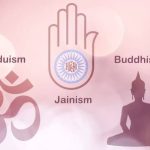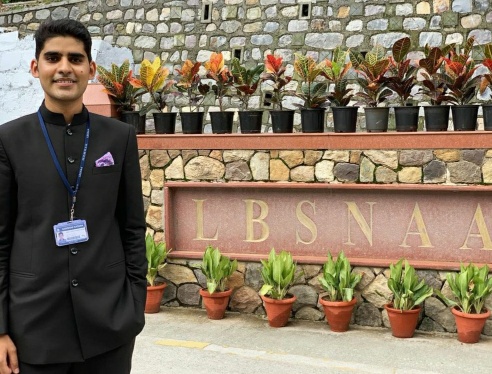- Pycnocline — layer separating two liquids of different densities | prevent vertical currents (except in Polar region)
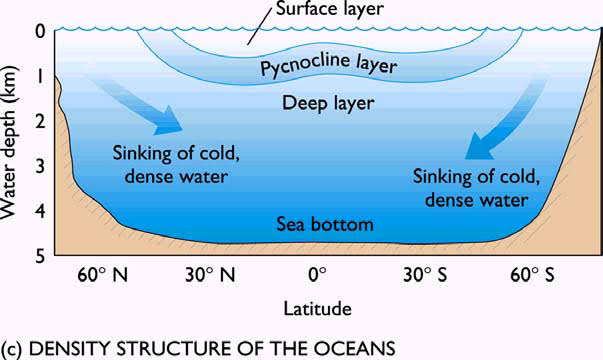
Closely related to salinity and temperature

- Warm and cold current mixing present the most productive zones in the sea — because they involve mixing of water and consequently the nutrients from down the ocean to the upper layers. This mixing (through upwelling) happens due to density differences which happen as the top layers of water in cold regions are cooled by the prevailing cold air.
- Such mixing areas are NOT good for navigation — as there is lots of fog.
- Tropical waters are one of the most UNPRODUCTIVE regions of the world — as there is depletion of nutrients in upper layers inhibiting the photosynthesis by planktons. There is no mixing or upwelling due to density variation here.
- Why don’t S-waves travel through Liquid medium?
- S-waves are shear waves, which move particles perpendicularly to their direction of propagation.They can propagate through solid rocks because these rocks have enough shear strength. Liquids do not have the same shear strength.
- At subduction — Andesite (Acidic) Magma (highly viscous and solidify quickly) — formation of islands
- At SFS — Basaltic (Basic) Magma (low viscous, flow extensively) — no islands
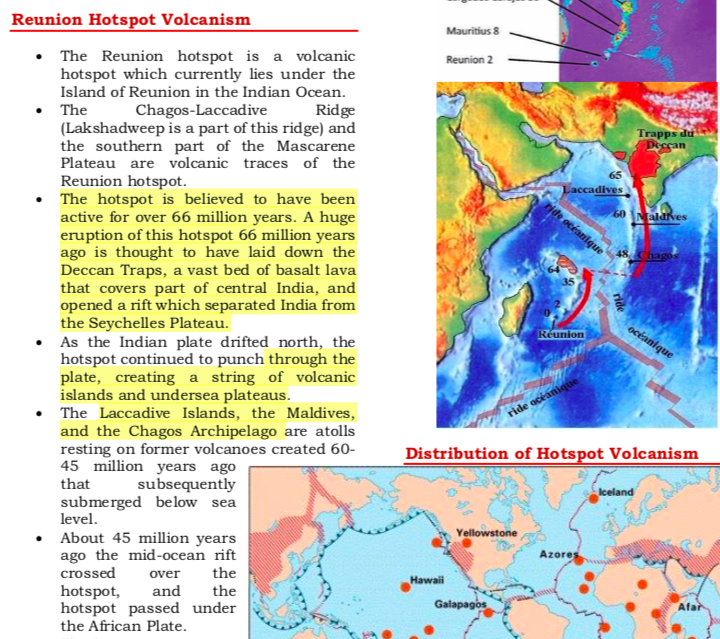


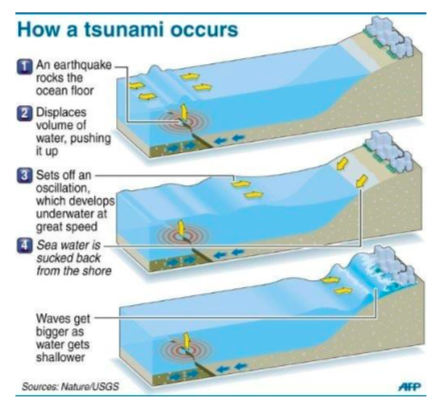
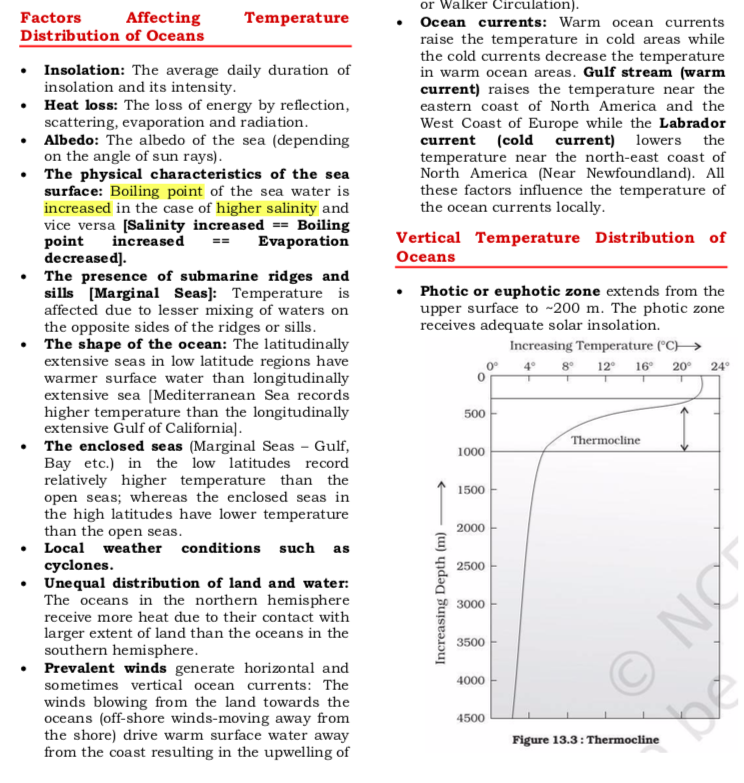
- Waves are actually the energy, not the water as such, which moves across the ocean surface. Water particles only travel in a small circle as a wave passes.
Deep Ocean Mission
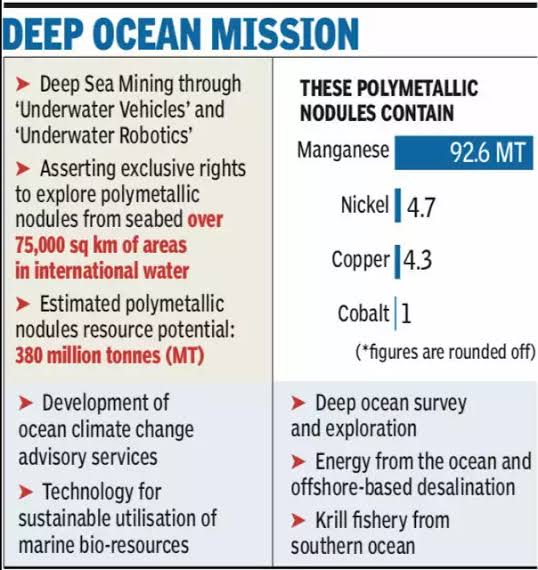
- ‘ISRO-like’ Ocean exploration
- Centre draws up a five-year, ₹8,000 crore plan to explore the deep recesses of the ocean.
- The Ministry of Earth Sciences unveiled a blueprint of the ‘Deep Ocean Mission (DOM)’
Proposed key deliverables to achieve these goals –
* Establish an offshore desalination plant that will work with tidal energy
* Developing a submersible vehicle that can go to a depth of at least 6,000 metres
* The focus will be on technologies for deep-sea mining, underwater vehicles, underwater robotics and ocean climate change advisory services, among other aspects.
FACTS —
- India has been allotted a site of 1,50,000 sq. km in the Central Indian Ocean Basin (CIOB) by the UN International Sea Bed Authority for exploitation of polymetallic nodules (PMN).
- It is envisaged that 10% of recovery of that large reserve can meet the energy requirement of India for the next 100 years.
- India’s Exclusive Economic Zone spreads over 2.2 million sq. km and in the deep sea, lies unexplored and un-utilised
- Constitutional Provision

- India was the first country in the world to have been given the Pioneer Area for exploration of deep-sea mineral — PMN
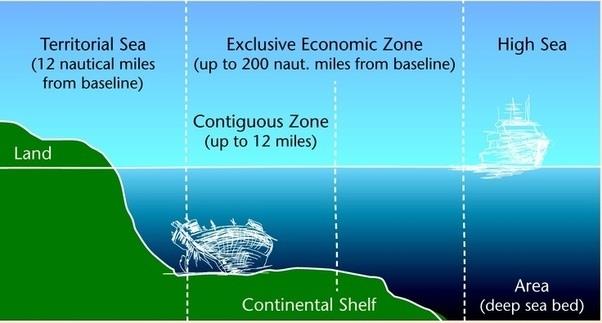







![Pratibha Verma [UPSC Topper] Book list, optional subject, Age, Family, Caste, Biography & More images-2B-252875-2529.jpeg](https://iasbio.com/wp-content/uploads/2020/11/images-2B-252875-2529.jpeg)


